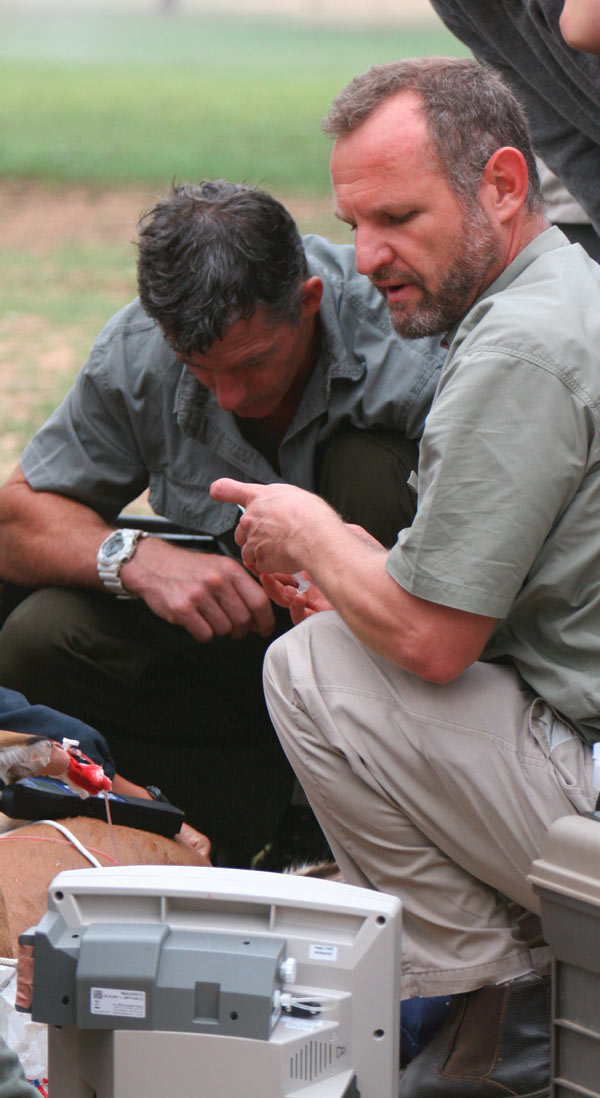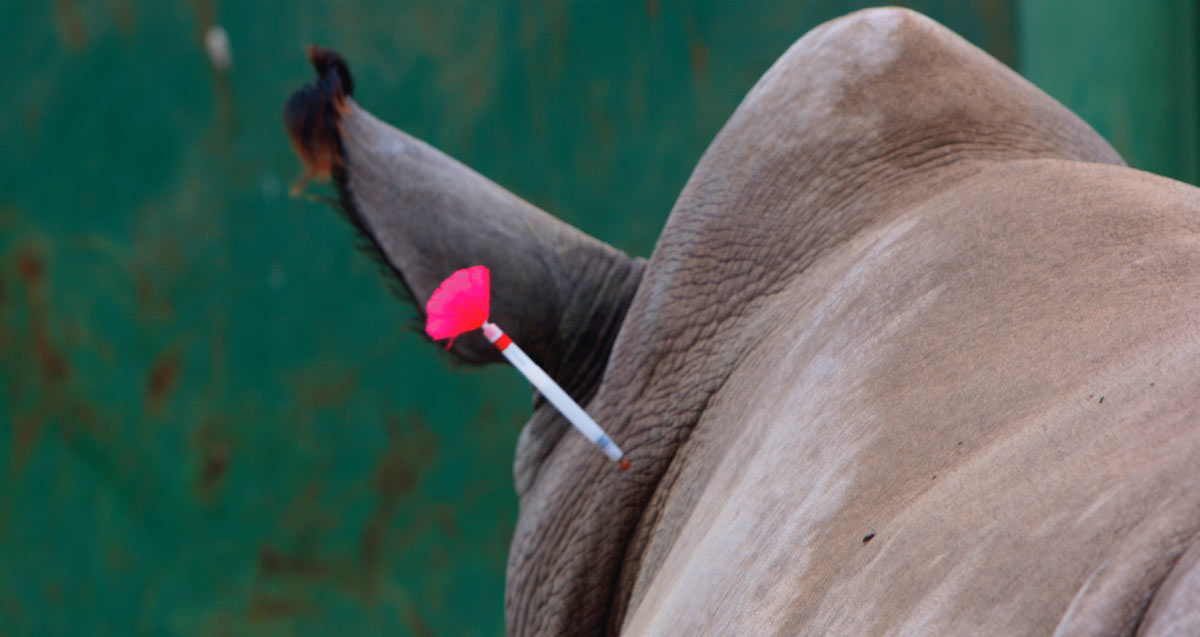 Professor Leith Meyer and colleagues test the cardiorespiratory effects of darting
Professor Leith Meyer and colleagues test the cardiorespiratory effects of darting
What causes death or the drug-induced side-effects is not entirely known. Professor Leith Meyer, in the Faculty of Veterinary Science, and his collaborators have embarked on a number of studies to better understand the effects of these drugs and of the capture process.
A highlight of their work has been an improvement in the safety of anaesthesia (chemical immobilisation) of the white rhinoceros. When immobilised via darting, rhino suffer from cardiorespiratory compromise and develop severe hypoxia. Simply administering oxygen to rhino is ineffective; in fact, it compromises them even more. Professor Meyer’s team found that combining oxygen with an analgesic drug called butorphanol adequately corrects hypoxia. However, this combination has only worked well in rhino kept in captivity, and was not as effective when animals were darted while being chased by a helicopter in the field.
Their research may not only have benefits for wild animals but also for humans. Humans, like animals, often suffer severely from respiratory depression when the analgesic group of drugs, the opioids, are used. Another noteworthy discovery by Professor Meyer is that opioid drugs, when used in wildlife, cause pulmonary hypertension. Meyer has clearly shown that this hypertension severely exacerbates the hypoxia caused by respiratory depression. Opioids have also been shown to cause pulmonary hypertension in humans, but their link to hypoxia, until now, has not been shown in humans or other animals.
In future studies they will look more closely into the lungs of immobilised rhino to observe how pulmonary pressures and other physiological changes influence gas exchange and hypoxia. These studies are critically important to help develop new anaesthetic approaches to reduce the risks associated with capture and anaesthesia. Their findings are being applied in the field and are already making a difference to this threatened species.
